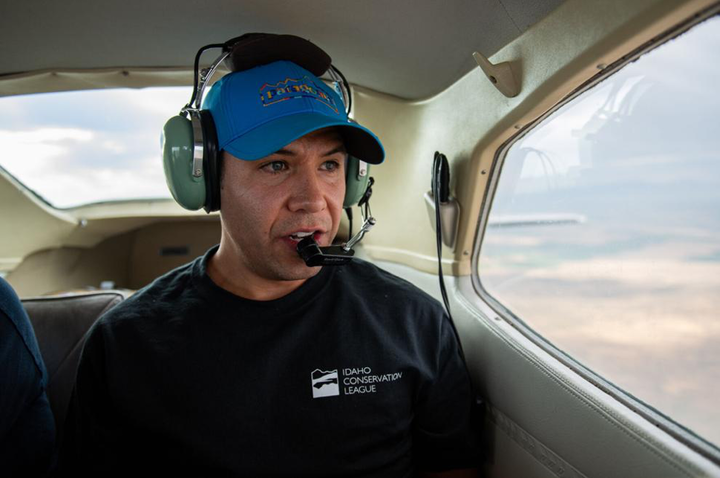The most contentious wind project in the country arrives—then falters—in Idaho
 Image via Hannah Kinson, Times-News
Image via Hannah Kinson, Times-NewsThe Lava Ridge Wind Project
What I’m not addressing is the lead up to this final assessment, which could honestly be an entire New Yorker-length article. Suffice to say there are some sympathetic groups who garnered prominent media attention in the years leading up to the project’s approval, but they turned out not to be honest brokers of their own cause. That’s for another day.
In the summer of 2024 I reviewed, according to Heatmap News, the most at risk energy project in the US. It took me a few days to read through a 2,500 page Final Environmental Impact Statement, discuss the implications and places of agreement with my public lands, wildlife, and energy colleagues, then quickly write our blog, BLM releases final assessment of Lava Ridge Wind Project.
We continued working with other organizations to find out where they stood on the project, and to try and increase support if they were movable. We kept learning more of the wind project’s impacts and benefits, and eventually were able to support the project in our blog, The Lava Ridge wind project is not perfect, but it is necessary. We continued our engagement by organizing a flyover of the area with some local journalists, a participating landowner who was in favor of the project, and Tribal representatives who were a bit more skeptical but open to learning more. You can read about that excursion here
This wind project’s draft proposal “poisoned the well of public trust”, as someone explained me. Even though the final project size was cut in half making it more restrictive than the most restrictive alternative initially examined, there was universal outrage from local and federally elected officials and plenty of indignation from the public (especially if they’re on FaceBook). Some of the disagreement was in good faith and worthy of considering, but it was swamped by the vitriolic outrage of cultural grievances being redirected at all renewable energy projects. Why? Because they acted as actual symbols of the Biden-administration ‘looking over them from the red blinky lights on all the turbines’ (new technology makes them blink only when planes are nearby, making them far less intrusive). Fast-forward to February 2025 where Lava Ridge was the only project explicitly named in any Executive Order signed by Trump. That EO functionally cancelled the project from being built.
This saga is not over because the area in question is the perfect place to build utility scale energy projects. During the FEIS development the BLM noted there were ~3GW of additional energy projects in various stages of development also on public lands. The reason there’s so much planned development is because (1) there is large continguous acres of public land, (2) the land is of marginal ecological integrity (see below on sagebrush ecosystems), and most importantly (3) the area is crisscrossed by high voltage transmission lines and a newly upgraded energy substation.
As I write this, there are more clean energy projects being proposed on private lands nearby the Lava Ridge project, and there are more transmission lines being proposed through there. Southcentral Idaho happens to be a geographic triple junction where hydropower from the PNW can move eastward, wind power from Wyoming and Montana can move westward, and solar power from the desert southwest can move northward. They all converge on the Twin Falls area, and that Midpoint Substation will act like a major energy traffic light for the entire Western grid.
In a renewables-centric future, we (all the western states) can share our electrons via transmission lines so we don’t have to overbuild each and every state. If there are regional extreme-weather events that put the grid under immense stress like the January 2024 cold snap, the desert southwest can use its excess solar production and send it northward so we don’t have blackouts. Having an interconnected grid helps with cost savings, grid reliability, and it minimizes how many energy projects we need to build. This does mean, however, that we need to build a lot more transmission lines even if, as the Audubon Society argues, there are some negative impacts to birds. When giving a TV interview to our local news station I was quoted as saying, “Yes, the Lava Ridge Project will kill some birds. But if we don’t stop burning dirty fossil fuels then thousands of birds will go extinct.”
There are no right answers, only trade-offs.